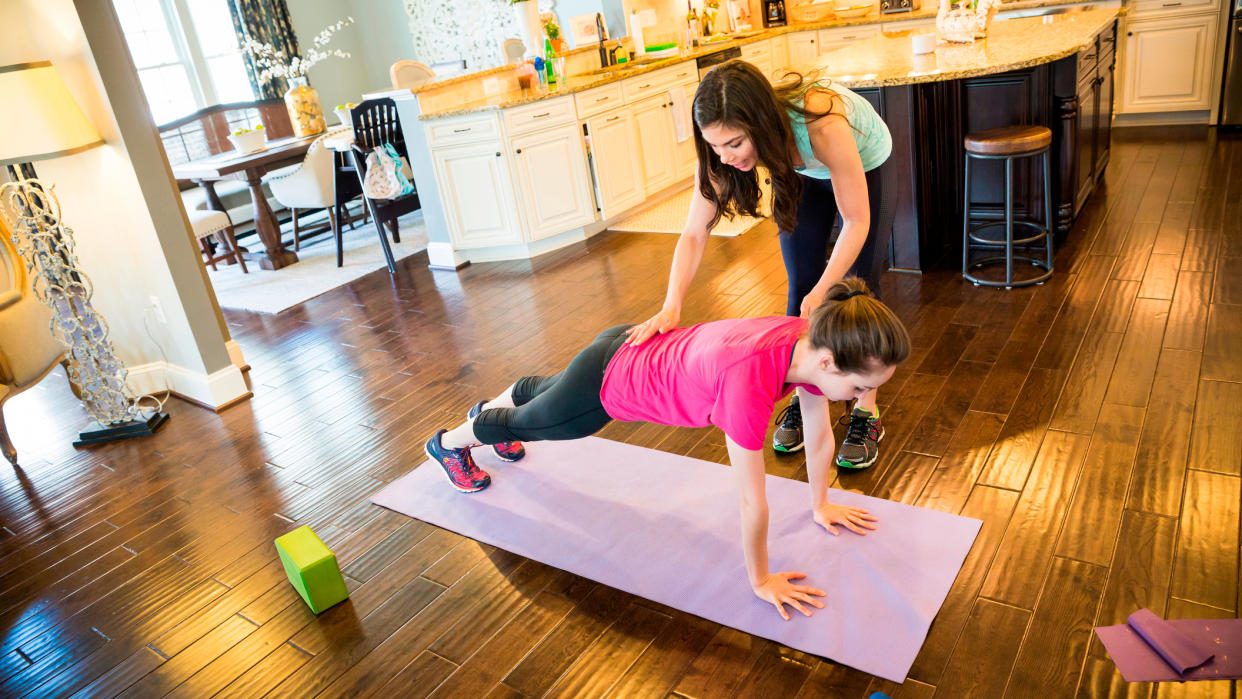The One Strength-Building Exercise Most People Get Wrong (And How You Can Get It Right)

Whether it’s a regular part of your exercise plan, something you were advised to do after seeing a physio for back pain, or even a move you tried for the first time after a recent study revealed how isometric exercises can improve blood pressure, most of us have attempted the plank. But we haven’t all done it correctly, according to one top trainer.
When I asked Ingrid Clay which exercise she sees butchered most often, she said the plank. “I often see people struggle with it, either from sunken shoulders or hip flexors that are up, or hip flexors that are too tucked under.”
Clay, who is the resident high-intensity resistance training (HIRT) expert for Chris Hemsworth’s training app Centr, says people think of the plank as a shortcut to a six-pack, when it should really be seen as a total-body workout.
Here are the plank mistakes Clay sees the most and how to remedy them.
1. Over-Reliance On The Core
When you’re performing the plank correctly, “your core is super-engaged, but so are other body parts,” says Clay. “Even your quads are under tension—they’re not contracting, but they’re under tension. Remembering that everything is supposed to be engaged is important.”
Your core should be used for stability, but you should also hold tension through your quads and shoulders to spread your weight more evenly throughout your entire body.
2. Hips Out Of Alignment
“I often see people with hips that are too high, or their pelvis is tucked under too much,” says Clay. Your body should be in a straight line from the top of your head to your heels, with a neutral spine. To achieve this, “tighten your core—think about bringing your bellybutton towards your spine.” Squeeze your glutes and quads, and tense your pelvic floor to bring your pelvis into alignment.
3. Shoulders Out Of Alignment
“Sometimes, instead of the shoulders being out and rounded, they protrude upwards, meaning you rest your bodyweight on your shoulders rather than hold your bodyweight up and distribute the weight throughout the whole body,” says Clay.
Start with a high plank, with your hands directly under your shoulders and arms extended, which Clay says takes a little pressure off the shoulders.
For more advice on this essential core exercise, read our guide to how to do a plank and for an easy way to incorporate it into your training, use our 30-day plank challenge.

